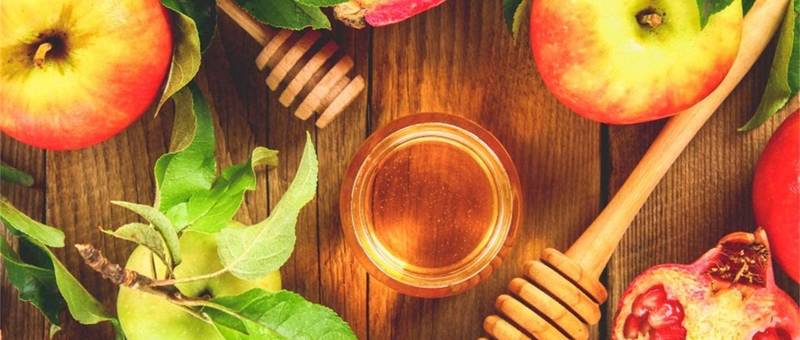
Rosh Hashanah
2025 Rosh Hashanah Programming | Online Rosh Hashanah Resources | 2025 High Holiday Programming
What is Rosh Hashanah?
Rosh Hashanah is the Jewish new year, taking place at the beginning of the month of Tishrei—the beginning of the Jewish civil calendar year. It is a two-day celebration of the new year, which follows a month of spiritual and emotional preparation during the month of Elul. This celebration is meant to both rejoice in the completion of another year and to look inward and take stock of that year that has passed. Rosh Hashanah also precedes the Ten Days of Repentance, also known as the Days of Awe, which concludes in the Day of Atonement, Yom Kippur. A major part of the Jewish High Holy Day traditions, Rosh Hashanah has its own customs we practice.
What are these customs?
Challah: Jewish traditional bread, Challah, is baked in a round shape during Rosh Hashanah to represent the eternal cycle of life.
Apples & Honey: It is tradition to dip Apples (or your round Challah) in honey during the Rosh Hashanah celebration. The sweetness of honey symbolizes the hope for a sweet new year...made even sweeter with a juicy apple slice!
Machzor: The prayer book used during Rosh Hashanah is called a Machzor. It is a High Holy Day prayer book that covers Rosh Hashanah through Yom Kippur—while each holiday has its own distinct observance and function, their themes are intertwined and the holidays are recognized together under one High Holy Days umbrella, which also includes holidays through Simchat Torah. The morning of Rosh Hashanah includes three prayers unique to the holiday: the Malkhuyot (addressing the sovereignty of God), the Zikhronot (presenting God as the one who remembers past deeds), and the Shofarot (expressing our anxious anticipation of the future).
Shofar: The Shofar is blown at the culmination of each of the above three special prayers. It acts as a reminder of the covenant between God and his people.
Tashlich: This custom is a symbolic casting away of our sins and is a spiritual journey suitable for all ages, which is done in concert with Teshuvah (repentance) during the High Holy Days. Tashlich is performed by traveling to a running body of water, preferably one that contains fish, reading a prayer passage for the occasion, and tossing bread crumbs representing your sins into the water. Stay tuned for information on this year's Tashlich programming!
The Significance of Rosh Hashanah
After devoting an entire month—to take dedicated steps of introspection, assessment, goal setting and forgiveness, the holy days of Rosh Hashanah are meant as an opportunity to celebrate the joys of the past year, the lessons learned, and the goals met. Additionally, they are meant as a time to begin asking forgiveness for the transgressions we have committed and setting goals for a better new year. It is our time to atone for our sins, both individual and communal, before God closes the books and inscribes our fates for the year to come (to be sealed on Yom Kippur during Ne'eilah).
ROSH HASHANAH SERVICES - CLICK HERE TO REGISTER (Please register whether you are joining us virtually or in-person.)
Below is our Rosh Hashanah schedule of in-person and virtual services. Click here to learn details about our programming.
September 22 | 7:30PM Erev Rosh Hashanah (Caltech Beckman Auditorium)
September 23 | 9:00AM Rosh Hashanah Day 1 (Caltech Beckman Auditorium)
September 23 | 10:30AM* Torah Service (Caltech Beckman Auditorium)
September 23 | 5:00PM Tashlich Program (LA Arboretum)
September 24 | 9:00AM Rosh Hashanah Day 2 (Temple Beth David)
September 24 | 10:30AM* Torah Service (Temple Beth David)
*These times are approximate.
Prayer & Observance:
- Tashlich Passage
- A Personal Tashlich Guide
- Walking Meditation with Intention—taking breaks between High Holy Days programming can enhance your Jewish experience
- PJTC High Holy Days Song & Prayer —a sneak peek at some of the songs and prayers you will hear at our services. Take a listen to get in the High Holy Days mood and to familiarize yourself so you can join along. See the below sample...for more, click the link!
Getting Ready for Rosh Hashanah:
- Article from My Jewish Learning
- PJTC Sisterhood Recipe: Buba's Jewish Apple Cake
- PJTC Sisterhood Recipe: Sweet & Sour Brisket
- Jamie Geller's "How to Shape Round Challah" video
Kids Corner
